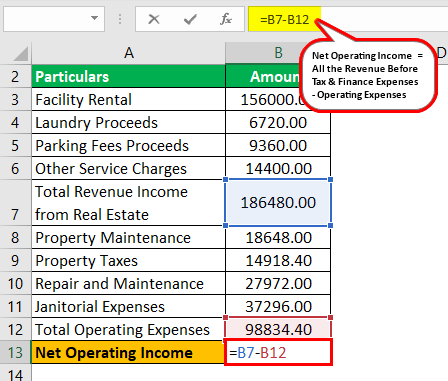
Invesco QQQ ETF gives you access to a diverse group of cutting-edge Nasdaq-100 companies — all in one fund. A long-running debate in asset allocation circles is how much of a portfolio an investor should… Unlike traditional ETFs, leveraged ETFs like TQQQ have a high turnover and utilize derivatives contracts.
Invesco’s QQQJ Next Gen ETF tracks the NASDAQ Next Generation 100 Index. Every one of the holdings within the QQQE ETF has the same weight of 1%. Let’s next take a look under the hood of QQQ by looking at its sector allocation strategy and top holdings. At the end of 2019, QQQ was the second-most traded ETF in the U.S.
TQQQ, as is the case with any leveraged ETF, is an instrument best used over intraday time frames, not as a buy-and-hold investment. Investors and traders that do not consider themselves “active” and “risk-tolerant” should eschew leveraged ETFs. However, it is a leveraged product using derivatives and debt to increase the returns to investors.
What Is the Difference Between QQQ and QQQQ?
Under the bearish scenario, the less risky S&P 500 tracked by the SPY would probably outperform. Due to QQQ’s outstanding performance, the fund has become one of the most popular funds among long-term investors. QQQE and QQQ are exchange-traded funds (ETFs), so there is no minimum investment. Direxion’s QQQE is heavily tilted towards growth stocks, which should be noted for potential new investors.
Invesco QQQ ETF Sees Multi-Billion Dollar Outflow Right as Its … – Bloomberg
Invesco QQQ ETF Sees Multi-Billion Dollar Outflow Right as Its ….
Posted: Wed, 21 Jun 2023 07:00:00 GMT [source]
It’s easy to confuse the Nasdaq-100 with the Nasdaq Composite Index (IXIC). QQQ only tracks the 100 companies included in the Nasdaq-100. The full Nasdaq Composite Index includes more than 3,000 symbols. If you want to track that index, look into an ETF like ONEQ, rather than QQQ. The Nasdaq is known as a “tech-heavy” index, but not all of the firms included are strictly tech-related. The non-financial industries include healthcare, retail, transportation, telecommunications, and more.
QQQ vs QQQE Differences
It’s essential to keep in mind that the past performance of an ETF does not guarantee future performance. Yet, it helps understand return earning potential and volatility. Put another way, the runway still looks vast, and the upside potential for even higher market volatility looks more likely, than a petering out of the same. When your directional call on the Nasdaq-100 is ambiguous at best, and volatility is likely to trend at elevated levels, that is hardly the time to be dabbling with a TQQQ.
- By far the best performing economic group year-to-date, even SPY’s 4% energy weighting could contribute to outperformance.
- Rated the best-performing large-cap growth fund (1 of 333) based on total return over the past 15 years by Lipper, as of June 30, 2023.
- QQQ will most likely meet the needs of an average investor seeking NDX exposure, but other products can help advanced traders achieve their goals.
- QQQ stock is the fifth most-popular exchange-traded fund in the world, holding more than $160 billion in investors’ assets.
It was one of the first NASDAQ funds issued and has been active since 1999. The next oldest fund on our list is QQQE, which began 13 years later in 2012. It is important to note that a few of the funds on our list are almost identical (QQQ & QQQM), while others are quite different indeed (QQQJ & QQQE). The index and ETF are rebalanced annually and simultaneously to avoid arbitrage.
Which Is Better QQQE or QQQ?
Overall, we remain negative on this fund, and you can see from our first bearish article, both ETFs have delivered poor returns. For both these funds, the underlying holdings remain incredibly expensive. QQQ shows the P/E ratio from June 30, 2022, and we should be in that same neighborhood considering where the market is. IBD’s Market Pulse will tell you if the market is in a confirmed uptrend and if now is a good entry point.
Open-end mutual funds and exchange-traded funds are considered a single population for comparison purposes. Ratings are calculated for funds with at least a three year history. The overall rating is derived from a weighted average of three-, five- and 10-year rating metrics, as applicable, excluding sales charges and including fees and expenses.
QQQ vs QQQM: 2 Differences
But that opinion makes us believe that earnings will contract and will contract hard. So that 28 likely becomes at least 35 when all is said and done. The second aspect here is that real yields (nominal yields minus inflation expectations) are rising briskly. Historically, when you get better qqqq vs qqq real returns in cash and bonds, P/E multiples contract. And ETFs can own everything from individual stocks, like QQQ does, to bonds, commodities and currencies. And rather than trying to pick the right tech stock to buy and when to buy it, place one trade and you own them all right now.

Buying fractional shares allows you to maximize your investment. You won’t have to keep your money idle until you have enough to purchase a total share. Holding structure refers to investment made by ETF in the companies. One of the significant differences between QQQ and QQQE lies in the area of holdings. This article compares these ETFs for performance, holdings, minimum investment, and cost.
thoughts on “QQQJ vs QQQM vs QQQN vs QQQE vs QQQ: What’s The Difference?”
“QQQQ,” “QQQ,” “the Qs.” No matter what you call it, the product in question is Invesco’s exchange-traded fund (ETF) that tracks the Nasdaq 100. The ETF used to trade under the ticker QQQQ; it has since dropped one of the “Qs.” You’ll now find it under the ticker QQQ. The stocks included in this ETF make up the 100 largest companies in the Nasdaq, excluding any financial companies. The QQQQ is the former ticker symbol of Invesco’s NASDAQ 100-based QQQ ETF (exchange-traded fund).

The Direxion Nasdaq-100 Equal Weighted Index (QQQE), like QQEW, owns equal weightings in all stocks in the Nasdaq 100, too. It’s smaller, $438 million, but cheaper with an annual expense ratio of 0.35%. The First Trust Nasdaq-100 Equal Weighted Index Fund (QQEW) owns all 100 nonfinancial stocks on the Nasdaq, too. But unlike QQQ stock, the QQEW owns all 100 stocks equally, rather than weighting them based on their value. The First Trust Nasdaq-100 Equal Weighted Index ETF is smaller than QQQ stock, with assets of $1.4 billion, and charges more (0.58%).
Because it is leveraged, it uses derivatives contracts to amplify its returns based on how the index performs. As such, it does not actually hold the shares of any companies. Instead, the unleveraged QQQ itself owns the companies in the index. By far the best performing economic group year-to-date, even SPY’s 4% energy weighting could contribute to outperformance.
But other ETFs own stocks in other indexes such as small stocks and midsize stocks. You can also buy ETFs that only own growth stocks or beat-up stocks called value stocks. Some ETFs only buy stocks held in specific sector indexes, such as information technology or utilities. QQQ stock, or the Invesco QQQ Trust (QQQ), puts the 100 most-important Nasdaq stocks into your portfolio in one trade.
We have a lot more downside to go, and investors should not chase “income” in this manner. That distribution won’t mean much if total returns are poor. It won’t mean much if you have a permanent capital loss, which we believe you will from this point. Finally, distributions can only be generated based on how high volatility is and how many dollars are backing each share. Both funds are extremely top-heavy with a few stocks dictating how the bulk of the money is allocated.
